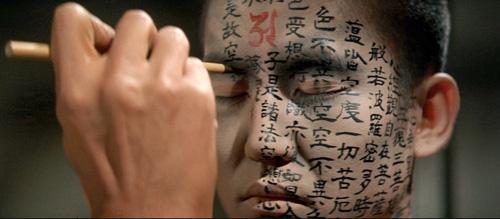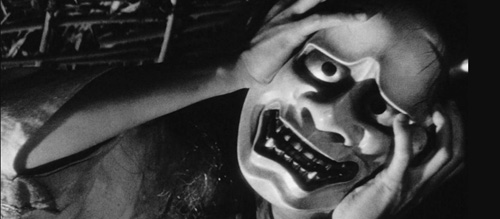10 Great Japanese Horror Movies
There was a point in time when it seemed that if a horror movie came from Japan, it would be inherently scarier. In particular during the J-Horror boom of the 1990s and early 2000s, every other film was given the title of Scariest of All Time and would inevitably be met with a (far weaker) Western remake. Whether Japanese horror movies are actually scarier will always be a matter of disposition. What is true, at least of the ten titles selected here, is that they are filled with the strange, the unique and the unexpected. You won’t find loud bangs and sudden jump scares here. Nor will you find the lingering shadow of Christian morality. Instead, you’ll be treated to vengeful spirits, crises of identity, tortured ghosts and a crippling fear of long, black hair.
A lot of these films work as dramas and anti-war protests, or warnings about the pitfalls of modern life and work, but driving everything beneath the surface are the supernatural forces which feed off human weakness. Using ten great horror films as an example, this Movie List will explore the changing and developing tropes in Japanese horror. Not every film on this list is out and out scary, but every story has a creeping cruelty that drips with dread.
These are 10 Great Japanese Horror Movies.
Follow The Film Magazine on Twitter.
1. Kwaidan (1964)

Kwaidan consists of four traditional ghost stories which, like a lot of classic folktales, seek to teach morals and feature humans unwittingly caught in supernatural forces far beyond their ken. But rather than witches or fairies, as we’re used to in the West, the supernatural forces in Kwaidan manifest as autonomous locks of cursed black hair, shapeshifting snow maidens, armies of ghosts and an evil spirit trapped in a cup of tea.
Continuing his stellar run of features (including The Human Condition and Hara-kiri), director Masaki Kobayashi shifts genres but not themes. A lot of the horror in Kwaidan comes from the fact that these are stories of humanity in crisis. They often focus on peasant characters trying to survive a war, or on the machinations of powerful feudal lords. A master of the craft, Kobayashi’s camera captures his characters with the same tragic eye he’d perfected in his dramas. Add to that the glorious hand-painted backdrops and the immaculate set design and this may be the most beautiful horror film ever made. More haunting than scary, watching Kwaidan’s protagonists struggle against their deathly fates sends satisfying shivers down your spine.
2. Onibaba (1964) & Kuroneko (1968)

These two horror films from writer/director Kaneto Shindô would make for an excellent double bill.
Onibaba follows a nameless widow and her mother-in-law (a formidable Nobuko Otowa) made destitute by war and forced to kill and steal for their survival. The mother, jealous of her daughter’s youth and terrified of being left alone, comes into possession of a terrifying demon mask. What she thinks is an opportunity to control her daughter through fear turns into a far more unpleasant curse.
As a companion piece, Kuroneko swaps anger and terror for romance and tragedy. A mother (Otowa again) and her daughter are brutally and senselessly killed by a group of marauding samurai. Resurrected as vampiric, cat-like spirits, they start to prey upon samurai. Rather than relishing in vengeance, the women are cursed to live a life without love or humanity.
Despite the supernatural twist, the horror in both films comes from how the weak are made desperate and destitute by the actions of the powerful. Shindô manages to make tension and threat ooze out of nature (you’ll never be more scared of the images of swaying grass or deathly quiet bamboo groves), as though the very country itself is cursed.
Brutal and beautiful in equal measure, Shindô’s supernatural tales offer a multi-faceted look at how war so often destroys what it is nominally trying to save.

